I am currently restoring and remixing quadrophonic compositions by Dutch composer Luctor Ponse. Like I wrote in this article, we intend to work towards a new binaural mix (to be released in 2026). The works themselves have been composed as a quadrophonic setup, to be presented in a live tape-concert. This was not unusual in those days.
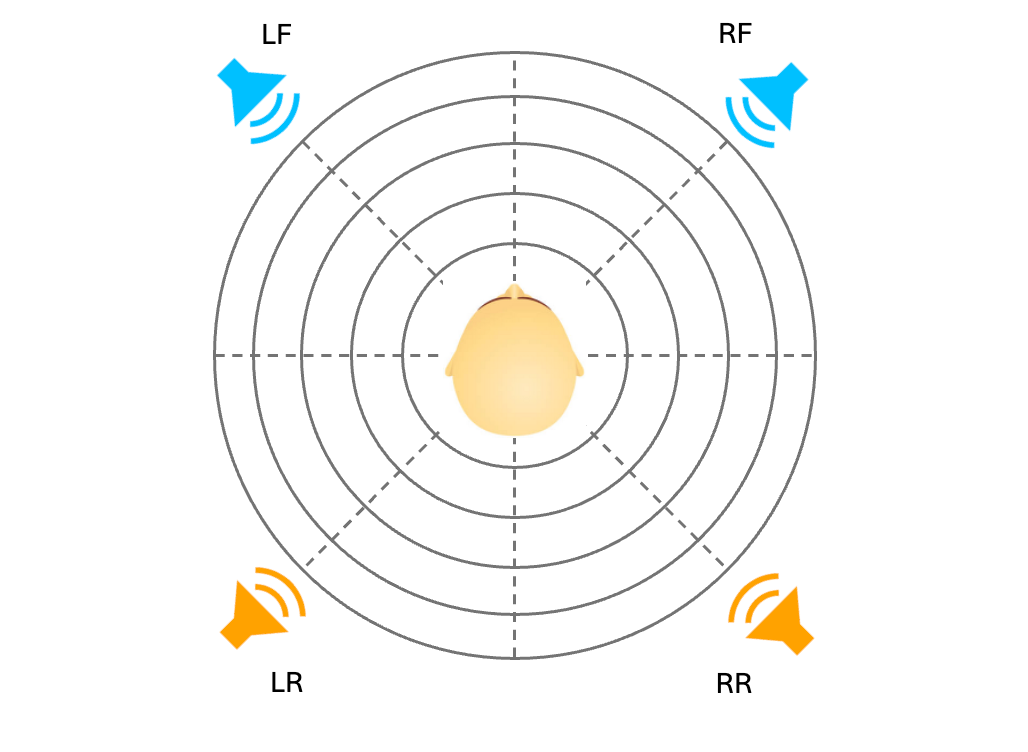
After some time a release on lp was considered, so naturally it became necessary to mix the 4 channels down to a 2-channel version. A commercially viable solution for stereophony had been introduced to the market in 1957. In the following years record companies were eager to switch to this new format because of reasons anyone can think of.
But how can we mix down 4 channels to 2 channels? After Stockhausen had produced his Kontakte in 1958-1960 as a quadrophonic concert he was asked for a stereo version to be released on vinyl. After some deliberation he came to the following proposal: Channels 1 and 2 (originally designated to the left front and back loudspeakers) were to be mixed to the left and channels 3 and 4 (originally designated to the right front and back loudspeakers) to the right. And it appears that in the following decades most (all?) of the quadrophonic works were mixed down following these rules.
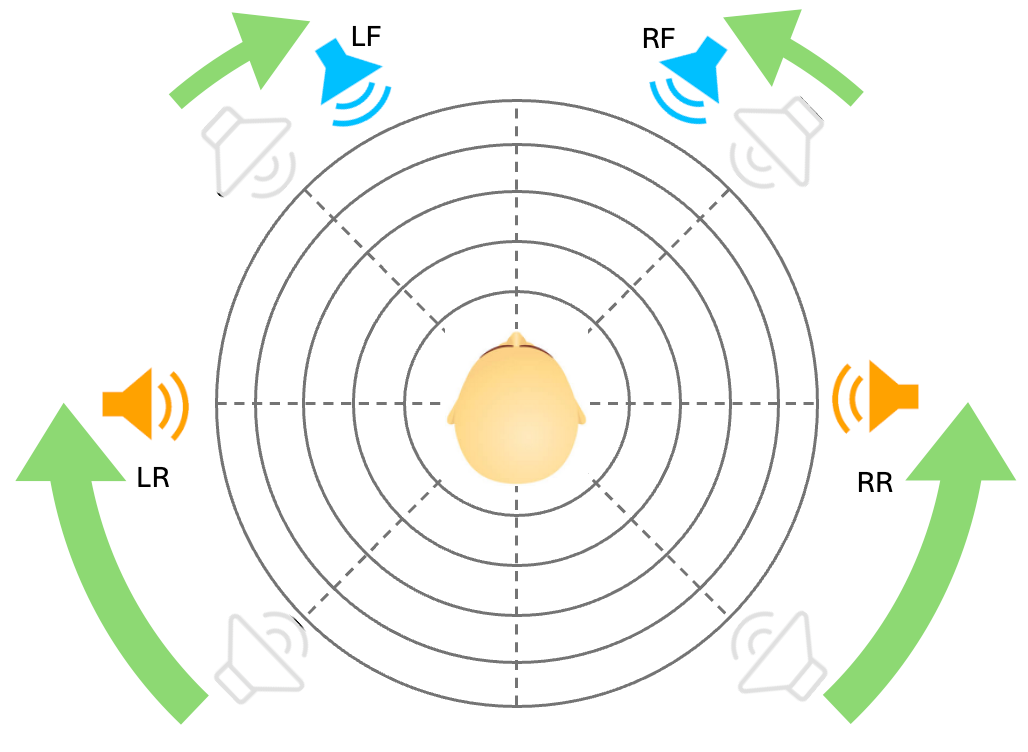
After translation to stereo the listener would experience a stereo plane like this (see picture 3). The rear channels are the most extremely left or right sounding channels and the front channels are somewhere in the middle.
I have researched a few stereo releases of quadrophonic compositions and contacted people who have worked on these mixdowns. In The Netherlands and at GRM (especially after the 1970s) it was common practice to mix the front left and right channels 30% out of the center and the rear left and right channels to the outer bounds.
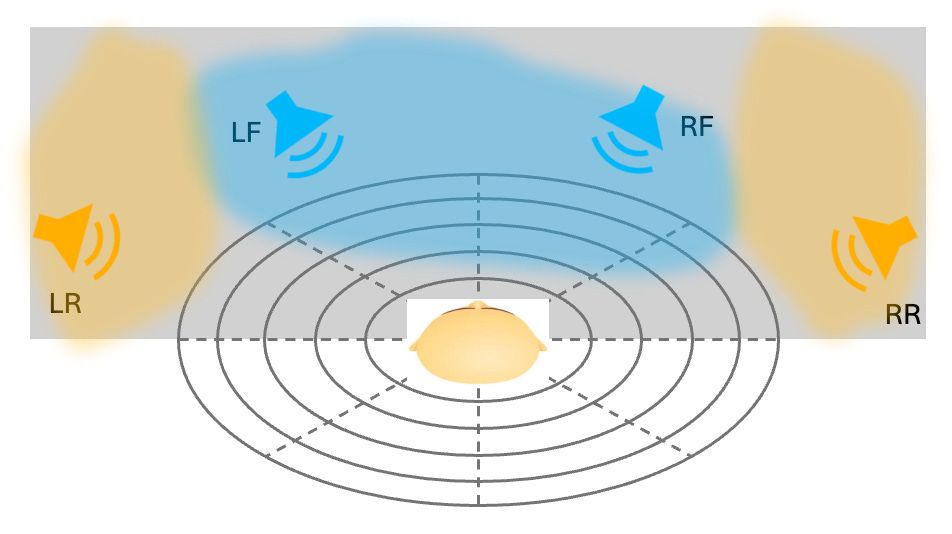
When I started this Dutch masters project I remembered my experiences of the tape-concerts I attended during the early 1980s. And indeed, in the past few years I also heard multichannel presentations of both classic and contemporary electronic music. I noticed that the rear channels never were as articulate as the front channels, both sonically ánd directionally. The sounds from the rear never really sounded like coming from left or right but, compared to the front speakers, rather mushy. The directionality was almost gone and I really couldn’t tell if a sound came from left or right, except when I turned my head.
To be absolutely sure I did some tests in my studio with a dummyhead recording and analyzed the recording of each separate channel. What I found was that the front speakers indeed are more directional and the rear speakers are a mixture of reflected and direct incoming signals. But the mix of reflected and direct signals has a different balance. Where in the front the ratio of direct vs reflected signal is something like 65%-35%, in the rear it’s closer to 50%-50%. But in any case it’s certainly not 100% left or right.
A new approach
I decided to look for a mix that is closer to the experience a listener has in a live quadrophonic presentation. Picture 4 shows how the front speakers are moved away from the center and the rear speakers in the opposite direction. In a stereofield that means that the frontspeakers have a clear directional left/right channel position whereas the rear speakers are moved to the middle (see picture 5).
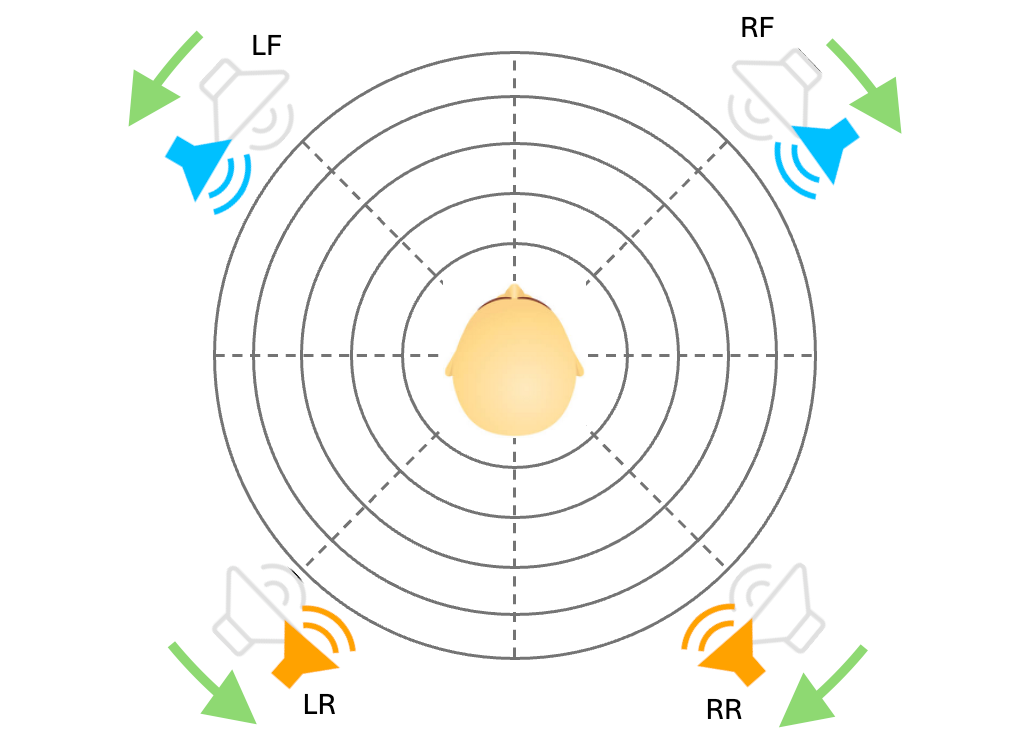
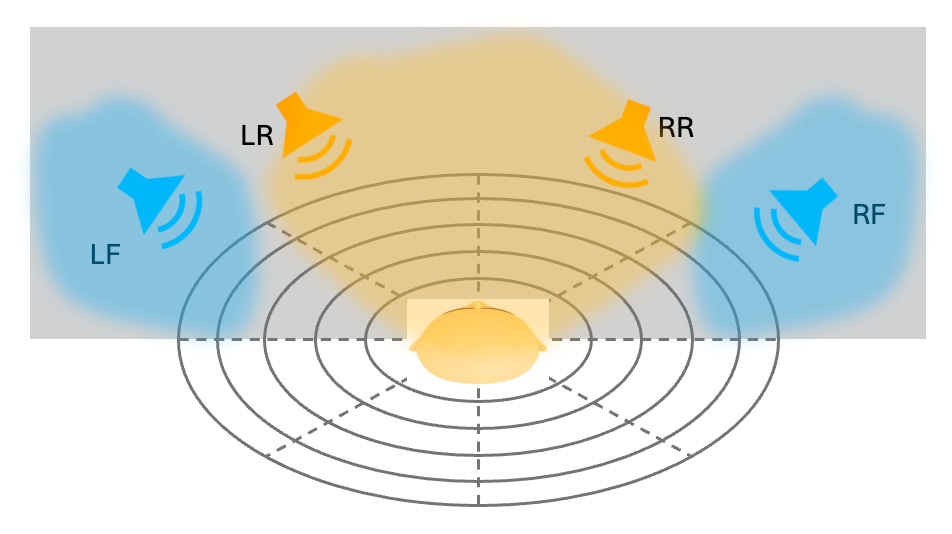
I realize that in some cases this has major consequences. When you compare picture 3 to picture 5 you can see that the front and rear speakers have switched positions. Also, the stereo mix of ‘my approach’ sounds different in some situations. When mixing the four tracks binaurally the audible separation between front and rear speakers is further enhanced. The latter is of course best experienced through headphones.

Below you can listen to the differences. This is an excerpt of Luctor Ponse’s Etude 1. The yellow waves in the picture above can be heard in the examples. You can hear the various individual parts quite well in this piece. Best heard through headphones, but it also ‘works’ with loudspeakers.
traditional mix (stereo)
traditional mix (binaural)
new mix (binaural)
The last example is the method I want to apply in the new release of restored works. What do you think works well?
Do you think we should let go of the idea of representing the sound experience that the composer had in mind?
Please let me know in an email.
Thanks, Jos

